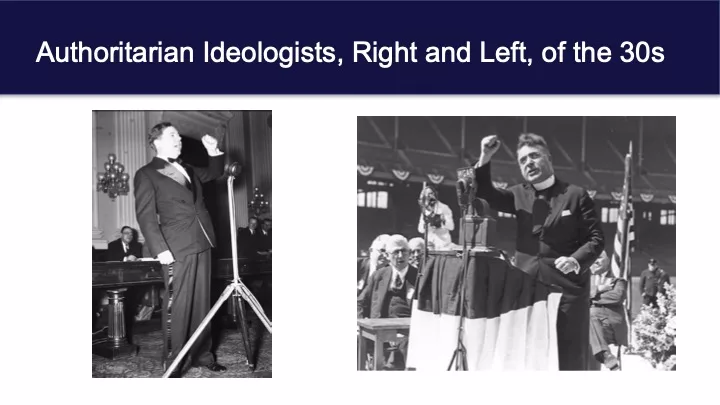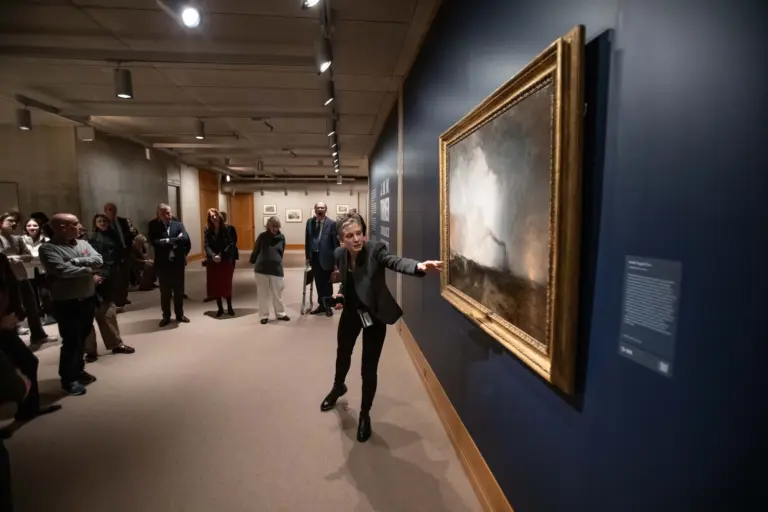
By Frank Scarpa
At the August 16 meeting of the Greenwich Retired Men’s Association, Hollister Sturges introduced the speaker, Susan Herbst, Ph.D. Dr. Herbst was the 15th president of the University of Connecticut, serving from December, 2010 until stepping down in July, 2019. She returned to the faculty, where she is university professor of political science and president emeritus, teaching at the Stamford campus. She received her B.A. in Political Science from Duke University and her Ph.D. in Communications Theory from the University of Southern California’s Annenberg School of Communication.
Today marks the second time Dr. Herbst has addressed the RMA. Her most recent book “A Troubled Birth: the 1930’s and American Public Opinion” provides the framework for today’s lecture “How Public Sentiment is Formed–the 1930s and Our Current Politics”. The period in American history from the stock market crash of 1929 up to our entry into World War Two provided the early roots for much of what we are witnessing today in terms of racism, incivility, and attacks on the rule of law. Moreover, the current concept of “public opinion” was born in the 1930s. The preceding decade had been affected by an overproduction of consumer goods, the expansion of buying on credit, 25% unemployment, drought in the Dust Bowl, and the brutal tariff policies of Herbert Hoover, as well as increasing immigration and urbanization. When FDR won the 1932 presidential election, the country seemed covered by a cloud of shame. Roosevelt was prescient in using the power of radio to address America as a coherent body, in an effort to elevate the national spirit.
Dr. Herbst provided thumbnail sketches of two of FDR’s foremost antagonists: the popular strongman Huey Long of Louisiana and the antisemitic Father Coughlin, both of whom used radio to their advantage. Radio itself was instrumental in the development of the science of polling. The concept of a “public” capable of an opinion was novel. Pioneers like Emil Hurja (in the White House), George Gallup, Sr., and Elmo Roper developed this science, and their work is still influential. Surveys and polls were able to quantify the voice of the people. Some early polling techniques were heavy-handed and self-serving. They were occasionally used to form public opinion as well as to measure it.
Advertising boomed in the 1930s. There was an emphasis on “hygiene” and self-help–deriving from the idea that we were a “coherent American public.” Conspiracy theories also blossomed. Not unlike today, a strain of anti-intellectualism began to flourish, and there were attacks on universities. Populism and authoritarianism began to fuse. (But in today’s climate of incivility, coarseness, and cruelty, it would be difficult to imagine “American unity” now.)
A question for America today is “What does democracy mean?” How do we get back to some sort of solidarity? Dr. Herbst speculates on issues like electoral college reform. She comes down more strongly on the side of educating our citizenry and teaching how to have civil debate.
A lively Q and A followed, touching upon issues such as social media, threats of violence, the concept of “civil war.” Dr. Herbst ended on a note of optimism derived from the idealism she sees radiating from her students.
To see the full presentation, go to https://greenwichrma.org, cursor to “Speakers” and click on “Speaker Videos.”
The RMA’s upcoming presentation, “Van Gogh’s Cypresses,” by Page Knox, PhD, is scheduled for 11 AM on Wednesday, August 30th. Vincent Van Gogh created some of the most iconic images of the south of France, capturing the region’s distinctive landscape which both inspired and astonished him, leading him to paint an exceptional body of work devoted to its golden wheatfields and colorful gardens, as well as its stately cypress trees. Join Page Knox for a discussion of Van Gogh’s paintings, drawings, letters, and more that depict the landscapes of Arles and Saint Rémy during the final years of his life, many of which are framed by these tall, powerful trees. Surprised that “no one has yet done them as I see them,” Van Gogh was drawn particularly to the cypress as a symbol of the natural and the spiritual; explored in a recent exhibition at the Metropolitan Museum of Art, his paintings of these ancient trees, including classics such as Starry Night and Wheat Fields with Cypresses, are magical and magisterial.
Page Knox is a contractual adjunct professor in the Art History Department of Columbia University and a contractual lecturer and educator at the Metropolitan Museum of Art. She works in a variety of capacities at the Met, teaching classes, and giving public gallery talks and lectures on special exhibitions and the permanent collection. She is also highly active leading trips for Travel with the Met, including the following tours:
*Raphael, Defining Beauty in Renaissance Italy: From Florence to Rome
*Met Classics: Rome
*Met Classics: Madrid
*Great Artists—Caravaggio, Master of Light & Shadow: From Rome to Malta
Dr. Knox earned her B.A. in Art History from Yale University and her Ph.D. in Art History from Columbia University in 2012.
To stream the presentation by Dr. Knox at 11 AM on Wednesday, August 30th, click on https://bit.ly/30IBj21. This presentation will also be available on local public access TV channels, Verizon FIOS channel 24 and Optimum (Cablevision) channel 79.
Note: The views expressed in these presentations are those of the speakers. They are not intended to represent the views of the RMA or its members.
RMA speaker presentations are presented as a community service at no cost to in-person or Zoom attendees, regardless of gender. The RMA urges all eligible individuals to consider becoming a member of our great organization, and thereby enjoy all the available fellowship, volunteer, and community service opportunities which the RMA offers to its members. For further information, go to https://greenwichrma.org/, or contact our membership chairman (mailto:members@greenwichrma.org).




